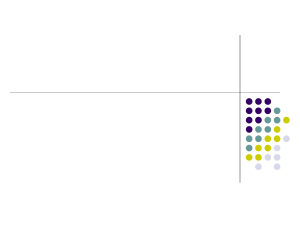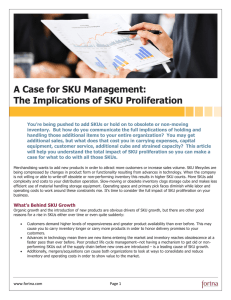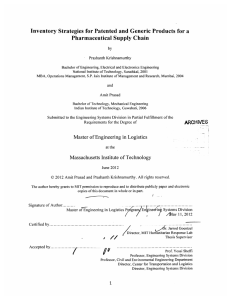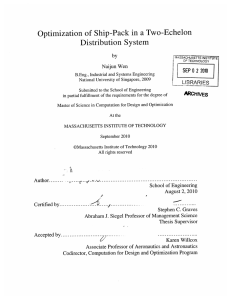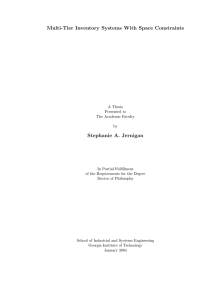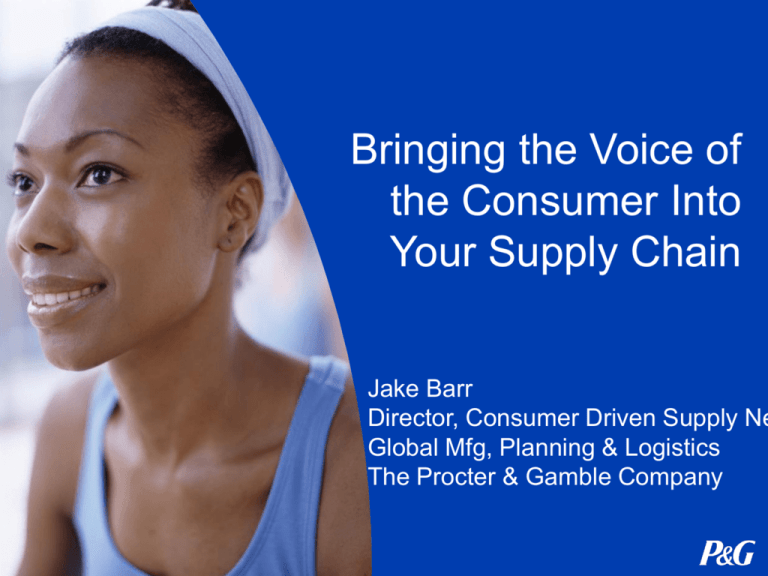
Bringing the Voice of
the Consumer Into
Your Supply Chain
Jake Barr
Director, Consumer Driven Supply Ne
Global Mfg, Planning & Logistics
The Procter & Gamble Company
About P&G
The Consumer is Boss
Why Change
What is Consumer focused
Supply Network
How to Change
agenda
1
2
3
4
5
6
Understanding What to Design & How
about P&G
P&G + Gillette = 22 Billion-Dollar Brands
5
P&G Today
• $67.9 billion sales*
• 140,000 employees
• More than 140
manufacturing facilities in
more than 80 countries
• More than 25 R&D centers in
12 countries
• Unique organization structure
*Unaudited proforma condensed combined
financial results of P&G and Gillette
consumer is
Two Moments of Truth
When they choose…
…and when they use
Winning at the First Moment of Truth
The need for a consumer-driven supply network
why change?
10
Consumer is Boss
Ever-increasing expectations
• Innovation
• Value
• Shelf presence
• Customization
• In-store experience
Retailers are Changing
To meet the needs of today’s consumers
• Industry consolidation
• Importance of free cash
flow
• Growth of private labels
• Focus on margins
• Seeking to be unique
• Seeking to offer
solutions
• Operational excellence
Challenges in the End-to-End Supply Chain
Today’s supply networks aren’t fast/flexible enough
Demand for affordability and value
Agility
Scale
• Speed to market
• Unique challenges
of developing and
developed
markets
• Ongoing effort to
reduce time and costs
in order to create value
for our business
Differentiation
• Unique needs of large,
global retailers vs. small,
local high-frequency stores
what is CDSN
Supply Chain Evolution
• Internal cost
• Reliability and flexibility
• Creating value with retail
customers and
consumers to drive
business growth
Agile, demand-driven
supply
Affordable differentiation
capabilities
Reliable service
Reliable Service
Externally focused measures:
• Right product
• Right place
• Right time
• Right quality
• Right price/value
Agile, DemandDriven Supply
• Reducing end-to-end supply
network time
• Producing to demand
• Increasing service and
reliability at a lower working
capital investment
• Accelerating speed-to-shelf for
new product innovations
• Information replaces inventory
Affordable Differentiation
• Shopper understanding –
a common starting point
• Customer understanding –
existing and emerging
needs (e.g., shelf-ready
packaging)
• Supply solutions
• Late-stage differentiation
• Flexible manufacturing
how to change
Change the Culture
External Focus
Becoming Externally Focused
Understand how the supply network performs from the
shopper and retailer perspective
• Remove barriers between supply community and
commercial/sales (e.g., rewards)
• Create awareness of customer needs into
company/category management
• SC leaders need to talk the
business language
(e.g., growing the business)
Change the
Relationship with
Customers
Full Collaboration
Build Internal Capability
• External focus: culture/measure change
• Operational excellence: service and availability
• Synchronization: information replaces inventory
• Shelf-back design
• Agility: take time and cost
out of the system
• Flexibility: customer and
consumer driven differentiation
Produce To Demand Continuum
Production Triggered By FORECASTS
Today’s
Operation
Shorten
Cycles
< 3 Days
Produce Every
SKU Every 2-wks
Produce Every
SKU Every Month
Production Triggered By KNOWN DEMAND
Orders, Customer Inventory Levels, POS
Produce Every
SKU Every Week
Produce To Order
Today, Ship
Tomorrow/Today
Produce to
Replenish
Inventory
Customer POS
Replenishment
Produce To Replenish
Customer DC Inventory
Withdrawal
FOCUS:
Improve Reliability/ Capability
Reduce Inventory Levels
FOCUS:
Supply Chain Synchronization
Supply Chain Integration
LEAN
AGILITY
2002 The Procter & Gamble Company, All Rights Reserved.
What about the Initiative process?
Reinventing the supply network
• Shelf back based product design to
win at the shelf
• Short cycle consumer/retailer
learning
• Answering question of what
innovation rhythm is required to win
• Source of new ideas
• > 50% Connect & Develop
• Supply Design integrated from the
beginning
• Supply Chain Time
So … where would you start?
Reinventing the supply network
BUILDING BLOCKS TO CONSIDER
Demand Journey
Demand
Integration
Distribution
Response Time
Event Visibility
Supplier
Integration
Quick
Changeover
Batch Reduction
Standardized
Demand/Supply
Processes
Quality at
Source
TPM/Loss
Elimination
Value Stream
Mapping
Standard Master Data – Run to MRP Measures
(Reliable data, predictable production & supply)
Do You know what
The Business Model
Requires for a
SN Design?
How to
Why?
Supply Network Design Process
• Brand Equity
• GBU & MDO Plans
1. Business Strategy
• Choice Structuring
• Price Driven Economics
Business Needs
• Business Strategy
• Industry, Technology Trends
2. Strategy Engagement
• Value in Supply Chain
• Sourcing Strategy
• Organization Focus
What?
Supply Network Requirements
• Scorecards
• Key Performance Measures
Where?
• High-Level Mapping
SN Performance Gaps
• Options Analysis
How?
3. Gap Analysis
4. Strategic Design
Strategic Direction
• Supplier Selection CBA
• Siting / Sourcing
5. Structural Design
• Outsourcing CBA
• Distribution/Replenishment
Supply Network Structure
• Demand Analysis
• Production Strategies
• Inventory Policy
Demand Strategy
Initiative Strategy
Material Supply Strategy
Material Sourcing Strategy
• Scorecards
6. Operational Design
Capacity Strategy
Planning Strategy
Production Sourcing Strategy
7. Deploy & Monitor
2006 The Procter & Gamble Company, All Rights Reserved.
• Operating Strategy CBA
• Simulation
• Mapping
Distribution Strategy
Inventory Strategy
Information Strategy
Questions?







